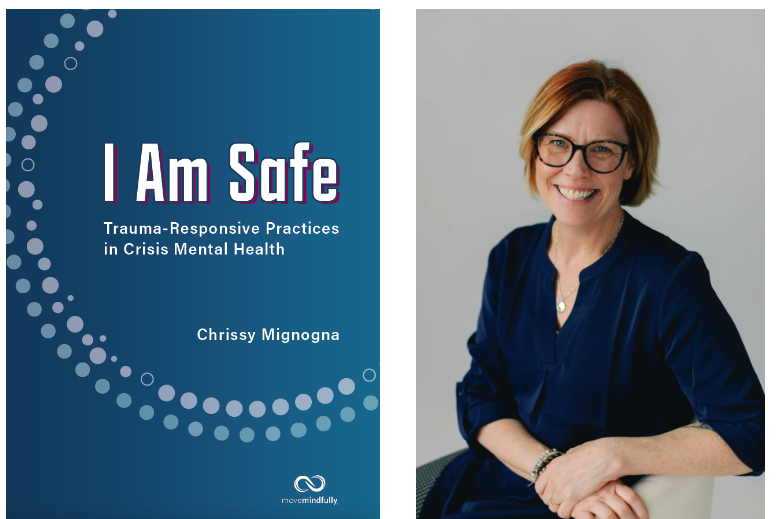Here’s a sneak peek of my soon-to-be-released new book, I Am Safe: Trauma-Responsive Practices in Crisis Mental Health. I have been writing this book since 2018 and I am nerv-cited (nervous and excited, a word I learned from a teen in a crisis mental health setting) to be sharing it with all of you.
I wrote I Am Safe because sharing mind-body strategies in hospitals, juvenile services, and special education districts (with both youth and adults) for over a decade has been so impactful to me personally and to our work here at movemindfully. I know first hand that sharing mind-body practices with youth and adults can be challenging. The trauma-responsive teaching tips in I Am Safe are based on real experiences to help bridge the gap between understanding the importance of mind-body skills and being able to share them in a practical, accessible, and inclusive way.
Through compelling stories, practice, and reflection, you will experience seven science-backed trauma-responsive teaching tips:
Trauma-Responsive Teaching Tip #1: Seeing and Accepting Participants Just as They Are
Trauma-Responsive Teaching Tip #2: Being Our Own Best Teachers
Trauma-Responsive Teaching Tip #3: The Importance of Connection
Trauma-Responsive Teaching Tip #4: Alternative/Introductory Mindfulness Strategies (AIMS)
Trauma-Responsive Teaching Tip #5: Messages for Trauma Healing
Trauma-Responsive Teaching Tip #6: Predictability Creates Safety
Trauma-Responsive Teaching Tip #7: Strengthening the Mind-Body Connection Through Reflection
Here is your sneak peek into Tip 1: Seeing and Accepting Participants Just as They Are, that illustrates how you might skillfully welcome (and affirm!) even the most reluctant participants:
“A young boy, Carter, was really struggling and expressing a lot of frustration about not getting to play video games. Carter was the only participant in our session that day, and he really did not want to be in our group. I pulled out my Inner Resources (both literally and figuratively!) and started arranging cards on the floor. I explained that I was organizing them for the next group and wondered if he might want to pick one to look at. He immediately said, “NO!” to which I replied, “Oh, here you go,” handing him the NO! Card. He then said, “No! I don’t want one!” I replied, “But you are using this one right now! See, you are using NO! It says [reading the front of the card], ‘Stop! No more! Not now!’ That’s such an important skill to be able to be clear about what you want and need right now.” This simple affirmation of Carter’s ability to communicate his wants and needs to me completely shifted our dynamic. He slowly started to look at the other cards, and we tried some different activities together.”
To pre-order your copy of I Am Safe: Trauma-Responsive Practices in Crisis Mental Health, visit our website. If you are interested in more information about our new training offering based on this book, please contact us at info@move-mindfully.com.

